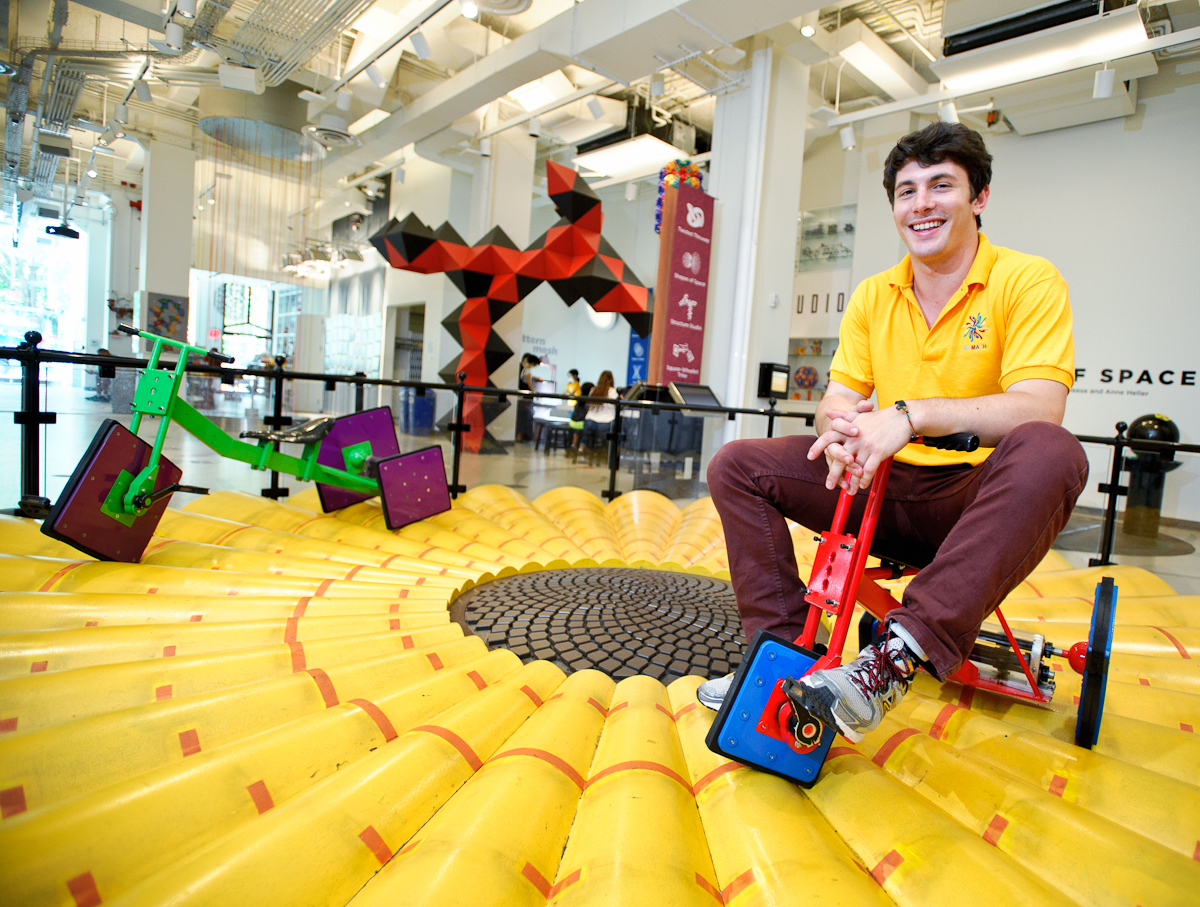
Colin Day ’16 is spending his summer at the National Museum of Mathematics in Manhattan, helping to tackle what he believes to be an all-too-common popular aversion to mathematics in today’s society. Day had discovered this opportunity through the Museum of Mathematics (MoMath’s) Facebook page. His internship is supported by the Monica Odening Student Internship and Research Fund in Mathematics, managed by Hamilton’s Career and Life Outcomes Center.
As an intern, Day’s primary responsibilities are working the floor of the museum, answering questions and explaining exhibits to inquiring visitors, as well as performing various tasks in the museum’s store and offices, granting a multifaceted and comprehensive museum experience. While this internship does provide the opportunity to work with some high-profile individuals, Day says that the everyday interactions with younger curious minds are what he values most. “It was cool to spend time with mathematician and Baltimore Raven John Urschel when he visited the museum,” he explained, “but maybe not as cool as the look on a little kid’s face after solving a puzzle they had been struggling with for 15 minutes.”
Although he has had previous experience teaching SAT level math in a more professional setting, Day claims that the museum offers a unique opportunity to educate others in a more fun and casual capacity. “The museum’s mission to make math accessible and interesting to non-math people, while at the same time having underlying layers of complexity that would satisfy a math Ph.D. really resonates with me,” he said. Day added that stigmas surrounding mathematics in the general public have led to significant deficits in both the public’s knowledge of functional mathematics, as well as the history surrounding math.
Day argues that while many may be familiar with a few particularly famous mathematicians, such as Newton and Pythagoras, many more may not be aware of the rich and varied histories surrounding those individuals; details that he argues would do wonders toward making the subject more accessible. In a time when science is enjoying a position near the forefront of the public’s eye thanks to the works of popular scientists such as Neil Degrasse Tyson and Stephen Hawkings, Day laments that mathematics hasn’t enjoyed quite the same revitalization in public interest.
To Day, one of the most promising avenues towards greater public awareness of math is to highlight the connections that mathematics has to elements of our everyday lives. “There is a much greater overlap of math and art than I think most people recognize. It is especially evident in the technology utilized by much modern and contemporary art, but art has used math for hundreds of years,” he said, citing the likes of Salvador Dali and M.C. Escher as examples of artists who have used mathematical principles to create their own unique artistic styles.
While approaches like these are being taken more and more, Day claims that early education in mathematics is still too often oriented towards memorization and the completion of drills, and that those early experiences with math during childhood may negatively color people’s perceptions of the subject as they advance into their adult lives.
Through tactile and engaging experiences like those offered by MoMath, however, Day believes that that distaste can be combatted, one individual at a time. Or, as he puts it, “(at the museum) you can ride a tricycle with square wheels - you can’t say that isn’t awesome, no matter how much you hated calculus.”
 Read more stories about students who are
Read more stories about students who are 